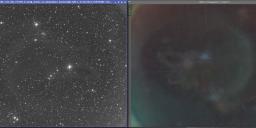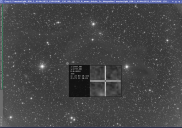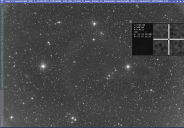Howdy, Stranger!
It looks like you're new here. If you want to get involved, click one of these buttons!
In this Discussion
step by step instruction to discover root cause for bad calibration
I'm struggling for more than a month now to discover the root cause of my calibration problems, with no effect at all. I searched but cound not find a good instruction how to determine step by step wich part of the process causes my problems...
The problem: I get a strange reflection in the center of my image after WBPP.
The target is the shark nebula, from a Bortle 9 backyard so quite challenging. LRGB, each channel has 5,5 hours of integration time
What i did so far:
Rule out the flats -> The flats are taken with a new dimmable flat panel. I thought that could be the problem, so took a new set of flats with a dimmable EL pabel i normally used. The EL panel has a very even light distribution. The rest (lights, darks, flat darks) the same. Result: same strange blob
Rule out the darks -> Took new darks and redid WBPP. No effect, same blob.
Rule darks and flats out -> Did wbpp with both of the above. No effect
1. So the only problem seems to hide in my Lights? But to me its seems strange that it happens on all filters.
2. The other strange thing i noticed is the very little difference in K-values betweeon the 'blob' part and the 'normal' sky background... 0.0123 vs 0.0124.
3. The corners look wonky so definetely something goning wrong with calibration too
I would love to know a step by step approach to see where in the process things go wrong. I still hope its the calibration part because these subs took a long time to gather
WBPP: Flats, Flat darks, darks and Lights
Camera: Cmos sensor (ZWO ASI 294MM Pro)
The camera is known to be very sensitive for the flats, so these are 4 to 5 seconds
Lights gathered over 5 nights within about a weeks time. In Nina i use a sequence to shoot 2 subs per filter, do all filters and then dither and start over again. So all filters have experienced roughly the same circumstances


shark.jpg
2434 x 840 - 337K


2024-10-14 14_25_00-PixInsight.png
1190 x 836 - 844K


2024-10-14 14_25_22-PixInsight.png
1199 x 833 - 845K

Comments